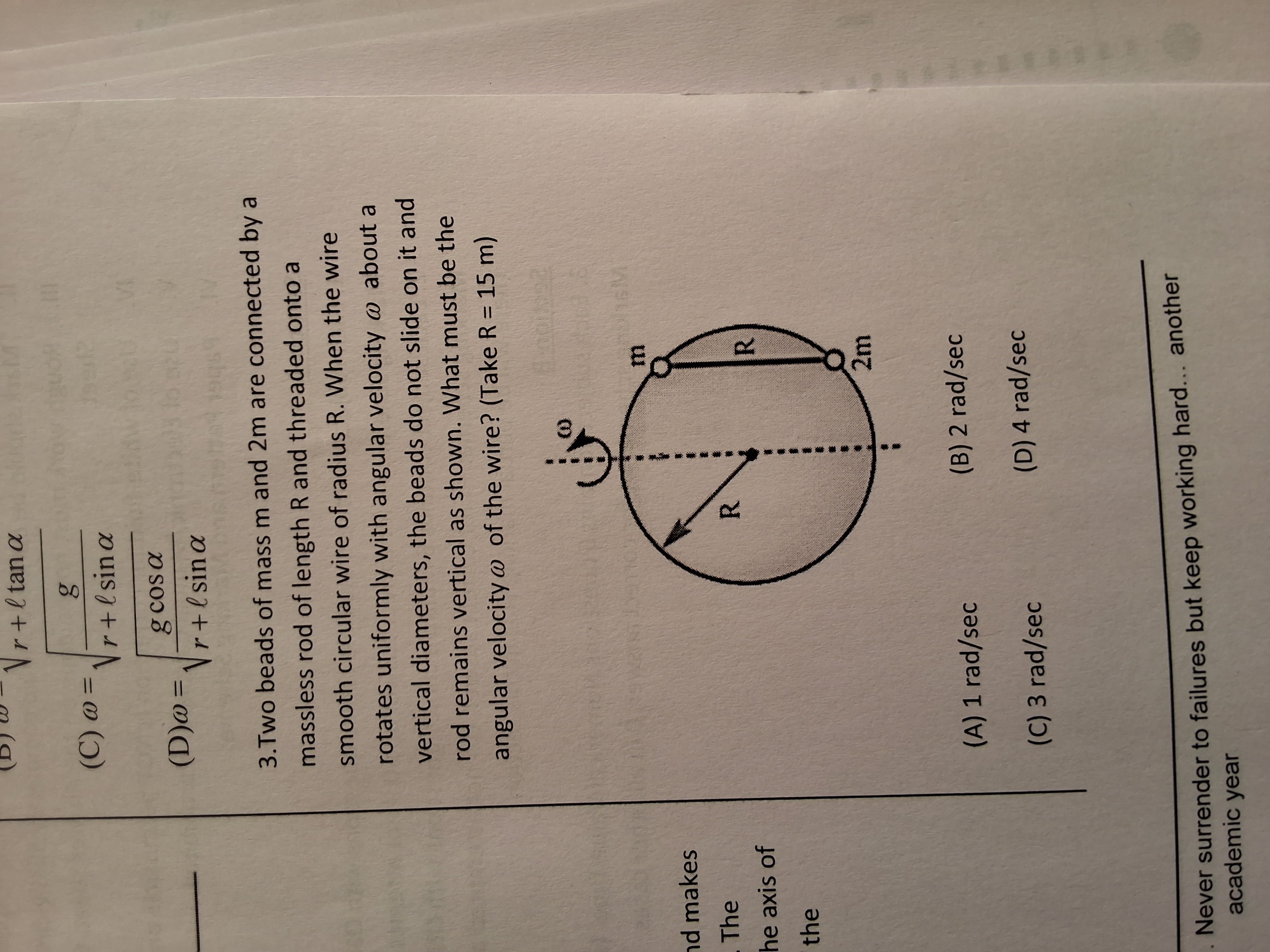Question
Question: Two beads of mass m and 2m are connected by a massless rod of length R and threaded onto a smooth ci...
Two beads of mass m and 2m are connected by a massless rod of length R and threaded onto a smooth circular wire of radius R. When the wire rotates uniformly with angular velocity ω about a vertical diameters, the beads do not slide on it and rod remains vertical as shown. What must be the angular velocity ω of the wire? (Take R = 15 m)

A
1 rad/sec
B
2 rad/sec
C
3 rad/sec
D
4 rad/sec
Answer
2 rad/sec
Explanation
Solution
The angular velocity ω of the wire must be 2 rad/sec.
Explanation of the solution:
- Determine the positions of the beads on the circular wire. Given a vertical rod of length R connecting two beads on a circle of radius R, the beads must be at heights z=R/2 (for mass m, θ=60∘) and z=−R/2 (for mass 2m, θ=120∘). The horizontal distance from the axis of rotation for both beads is r=Rsinθ=R3/2.
- Apply the condition for no sliding: The net force component along the tangent to the wire must be zero for each bead.
- For the upper bead (m): Tangential component of forces (weight, centrifugal force, rod force T) sum to zero. This yields T=m(g+ω2R/2).
- For the lower bead (2m): Similarly, tangential components sum to zero. This yields T=mω2R−2mg.
- Equate the two expressions for T: m(g+ω2R/2)=mω2R−2mg.
- Solve for ω: This simplifies to 3g=ω2R/2, leading to ω=6g/R.
- Substitute R=15 m and g=10 m/s2 into the formula to get ω=6×10/15=4=2 rad/sec.
